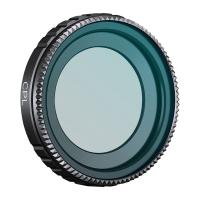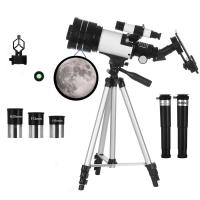How To See Chromosomes Under Microscope ?
To see chromosomes under a microscope, first, prepare a sample by collecting cells. This can be done by scraping the inside of the cheek or obtaining a tissue sample. Next, treat the cells with a solution to stop cell division and preserve the chromosomes. Then, spread the cells onto a microscope slide and let them dry. Stain the cells with a dye that specifically binds to the chromosomes, such as Giemsa stain. Once stained, place a coverslip over the cells and observe them under a microscope. Use a high-power objective lens to focus on individual cells and locate the chromosomes. Adjust the focus and lighting as needed to clearly visualize the chromosomes. Finally, capture images or make drawings of the chromosomes for further analysis or documentation.
1、 Sample Preparation for Chromosome Observation
To see chromosomes under a microscope, proper sample preparation is crucial. Here is a step-by-step guide on how to prepare a sample for chromosome observation:
1. Cell Culture: Start by culturing the cells of interest in a suitable growth medium. This allows the cells to proliferate and reach the desired stage of the cell cycle for chromosome observation.
2. Arresting the Cell Cycle: To obtain a synchronized population of cells, it is often necessary to arrest the cell cycle at a specific stage. This can be achieved by using chemical agents like colchicine or nocodazole, which disrupt microtubule formation and prevent cell division.
3. Harvesting the Cells: Once the cell cycle is arrested, the cells need to be harvested. This can be done by gently detaching the cells from the culture dish using trypsin or other enzymatic treatments. The cells are then collected in a centrifuge tube.
4. Hypotonic Treatment: To swell the cells and spread the chromosomes, a hypotonic solution (e.g., 0.075M KCl) is added to the cell suspension. The cells are incubated in the hypotonic solution for a short period of time, usually around 10-20 minutes.
5. Fixation: After the hypotonic treatment, the cells are fixed to preserve their structure. This is typically done by adding a fixative solution, such as methanol-acetic acid (3:1), to the cell suspension. The cells are gently mixed and then centrifuged to form a pellet.
6. Slide Preparation: The fixed cell pellet is resuspended in a small volume of fixative and dropped onto a clean glass slide. The slide is then air-dried or gently heated to promote cell adhesion.
7. Staining: To visualize the chromosomes, various staining techniques can be used. The most common method is Giemsa staining, which produces characteristic banding patterns on the chromosomes. Other staining techniques, such as fluorescent dyes or FISH (fluorescence in situ hybridization), can also be employed to highlight specific chromosomal regions or genetic markers.
8. Microscopic Observation: Once the staining is complete, the slide is ready for microscopic observation. A high-resolution microscope equipped with appropriate objectives and filters is used to visualize and analyze the chromosomes. Advanced techniques like spectral karyotyping (SKY) or comparative genomic hybridization (CGH) can provide even more detailed information about chromosomal abnormalities or rearrangements.
It is important to note that recent advancements in molecular techniques, such as next-generation sequencing and single-cell analysis, have revolutionized the field of chromosome observation. These techniques allow for high-throughput analysis of individual chromosomes or even single DNA molecules, providing unprecedented insights into chromosomal structure and function.

2、 Microscope Settings for Chromosome Visualization
To see chromosomes under a microscope, you need to follow specific techniques and microscope settings for chromosome visualization. Here is a step-by-step guide on how to see chromosomes under a microscope:
1. Sample Preparation: Obtain a sample containing cells with visible chromosomes. This can be achieved by collecting cells from a tissue sample, blood, or bone marrow.
2. Cell Fixation: Fix the cells using a fixative solution such as methanol or acetic acid. This helps preserve the cellular structure and prevent degradation of chromosomes.
3. Staining: Apply a chromosome-specific stain, such as Giemsa or DAPI, to enhance the visibility of chromosomes. These stains bind to the DNA in the chromosomes, making them more visible under the microscope.
4. Microscope Settings: Set up the microscope for optimal visualization of chromosomes. Use a high-power objective lens (40x or higher) to achieve a magnification sufficient to observe individual chromosomes. Adjust the focus and lighting to obtain a clear image.
5. Chromosome Identification: Look for condensed structures within the cells, which indicate the presence of chromosomes. Chromosomes typically appear as dark, rod-shaped bodies.
6. Analysis: Count the number of chromosomes and observe their size, shape, and arrangement. This information can provide insights into genetic abnormalities or variations.
It is important to note that advancements in microscopy techniques, such as fluorescence in situ hybridization (FISH) and spectral karyotyping (SKY), have revolutionized chromosome visualization. FISH allows for the detection of specific DNA sequences on chromosomes, while SKY enables the visualization of multiple chromosomes simultaneously. These techniques provide a more detailed analysis of chromosomal abnormalities and have greatly contributed to our understanding of genetic disorders.
In conclusion, by following the steps outlined above and utilizing the latest microscopy techniques, it is possible to see and analyze chromosomes under a microscope.

3、 Staining Techniques for Chromosome Visualization
To see chromosomes under a microscope, staining techniques are commonly used to enhance their visibility. These techniques involve treating the cells with specific dyes that bind to the DNA in the chromosomes, making them more easily distinguishable.
One of the most widely used staining techniques is called Giemsa staining. This method involves fixing the cells on a slide, treating them with a fixative solution, and then staining them with a Giemsa dye. The dye binds to the DNA in the chromosomes, resulting in distinct banding patterns that can be observed under a microscope. Giemsa staining is particularly useful for visualizing the overall structure and arrangement of chromosomes.
Another staining technique is called fluorescent in situ hybridization (FISH). FISH involves using fluorescently labeled DNA probes that bind to specific regions of the chromosomes. This technique allows for the visualization of specific genes or chromosomal abnormalities. FISH has become an essential tool in genetic research and diagnostics.
In recent years, advancements in microscopy technology have allowed for higher resolution imaging of chromosomes. Super-resolution microscopy techniques, such as structured illumination microscopy (SIM) and stochastic optical reconstruction microscopy (STORM), have enabled researchers to visualize chromosomes with unprecedented detail. These techniques have provided new insights into the organization and dynamics of chromosomes within the nucleus.
Overall, staining techniques have been instrumental in studying chromosomes and understanding their role in genetics and disease. The latest advancements in microscopy have further enhanced our ability to visualize and analyze chromosomes, opening up new avenues for research and discovery.

4、 Identifying Chromosome Structures and Banding Patterns
To see chromosomes under a microscope and identify their structures and banding patterns, follow these steps:
1. Sample preparation: Obtain a tissue sample, such as blood or bone marrow, from the organism of interest. Add a hypotonic solution to the sample to swell the cells and release the chromosomes.
2. Fixation: Add a fixative solution, such as methanol-acetic acid, to preserve the chromosomes and prevent degradation. This step also helps to spread the chromosomes evenly on the slide.
3. Slide preparation: Drop a small amount of the fixed cell suspension onto a clean microscope slide. Gently spread the suspension to create a thin, even layer. Allow the slide to air dry.
4. Staining: Apply a chromosome-specific stain, such as Giemsa or Wright's stain, to the slide. These stains highlight the banding patterns on the chromosomes, which are unique to each chromosome and aid in identification.
5. Microscopy: Place the slide under a light microscope equipped with a high-resolution objective lens. Start with a low magnification to locate the cells and then switch to a higher magnification to observe the chromosomes in detail.
6. Analysis: Examine the chromosomes under the microscope, focusing on their size, shape, and banding patterns. Compare the observed patterns with known karyotypes or reference images to identify the chromosomes.
It is important to note that recent advancements in molecular techniques, such as fluorescence in situ hybridization (FISH) and comparative genomic hybridization (CGH), have provided more precise and detailed information about chromosome structures and abnormalities. These techniques involve labeling specific DNA sequences with fluorescent probes, allowing for the visualization of specific regions or genes on the chromosomes. Additionally, advancements in imaging technology, such as high-resolution microscopy and digital image analysis, have improved the accuracy and efficiency of chromosome analysis. These advancements have greatly contributed to our understanding of chromosomal disorders and genetic diseases.





































